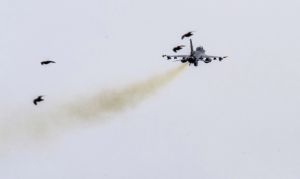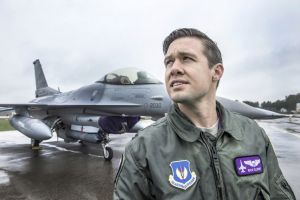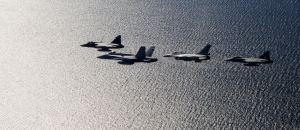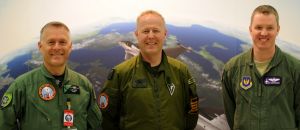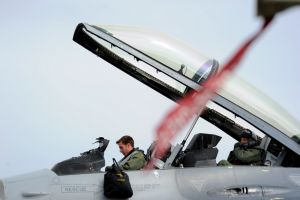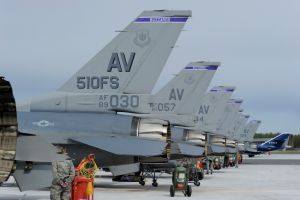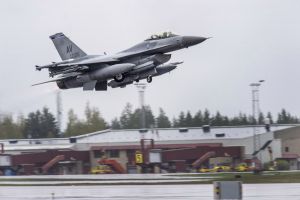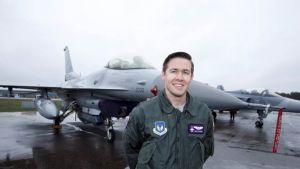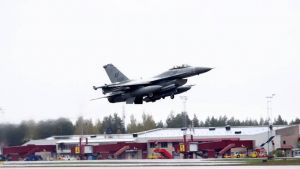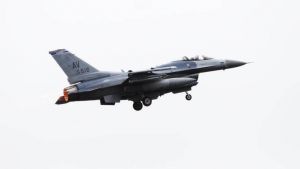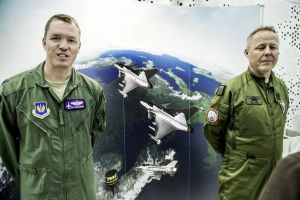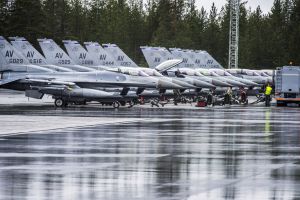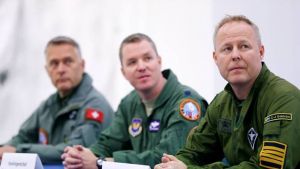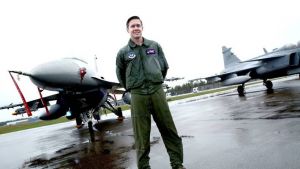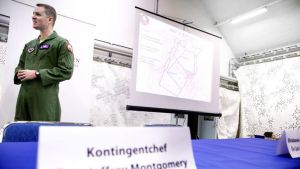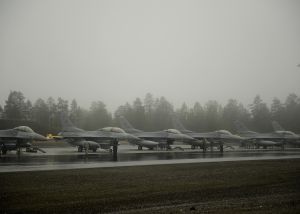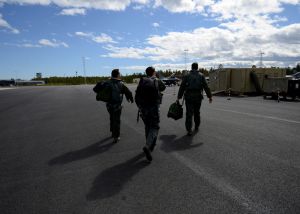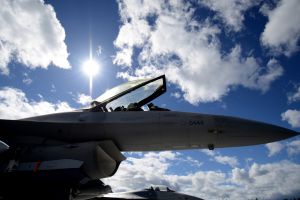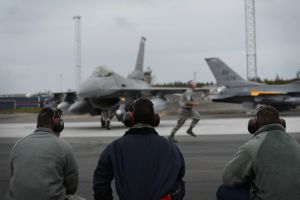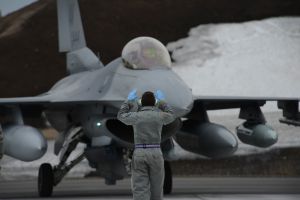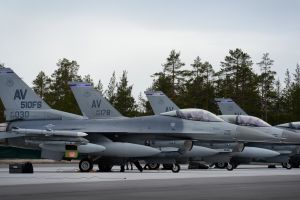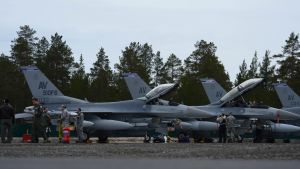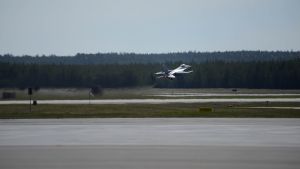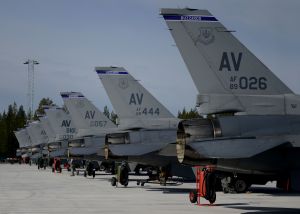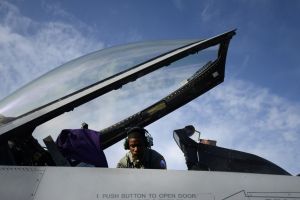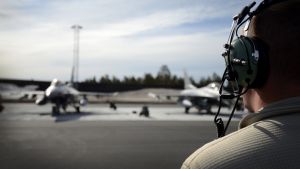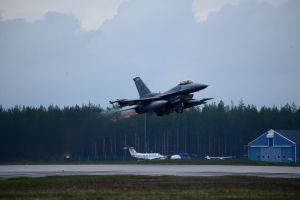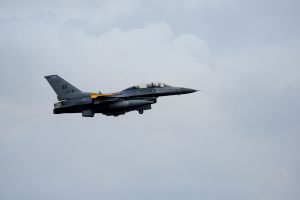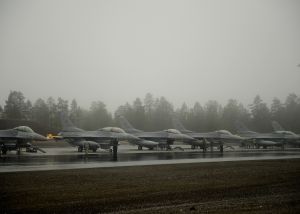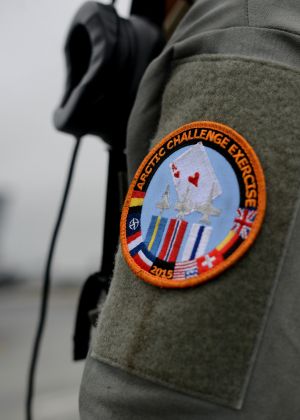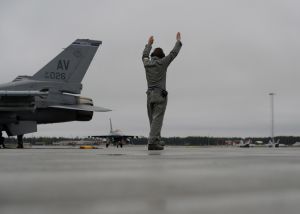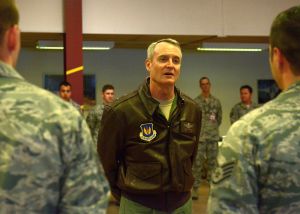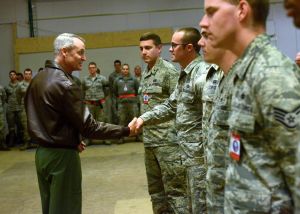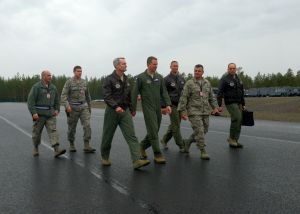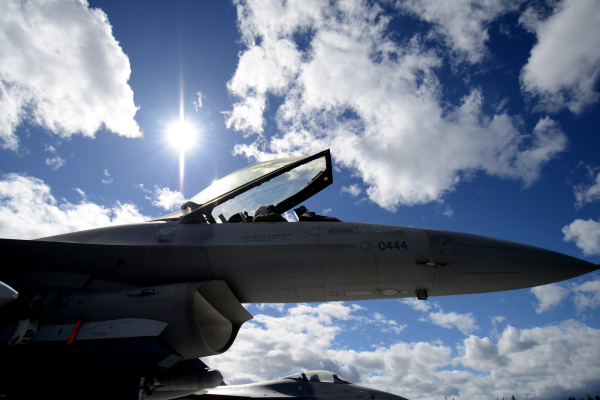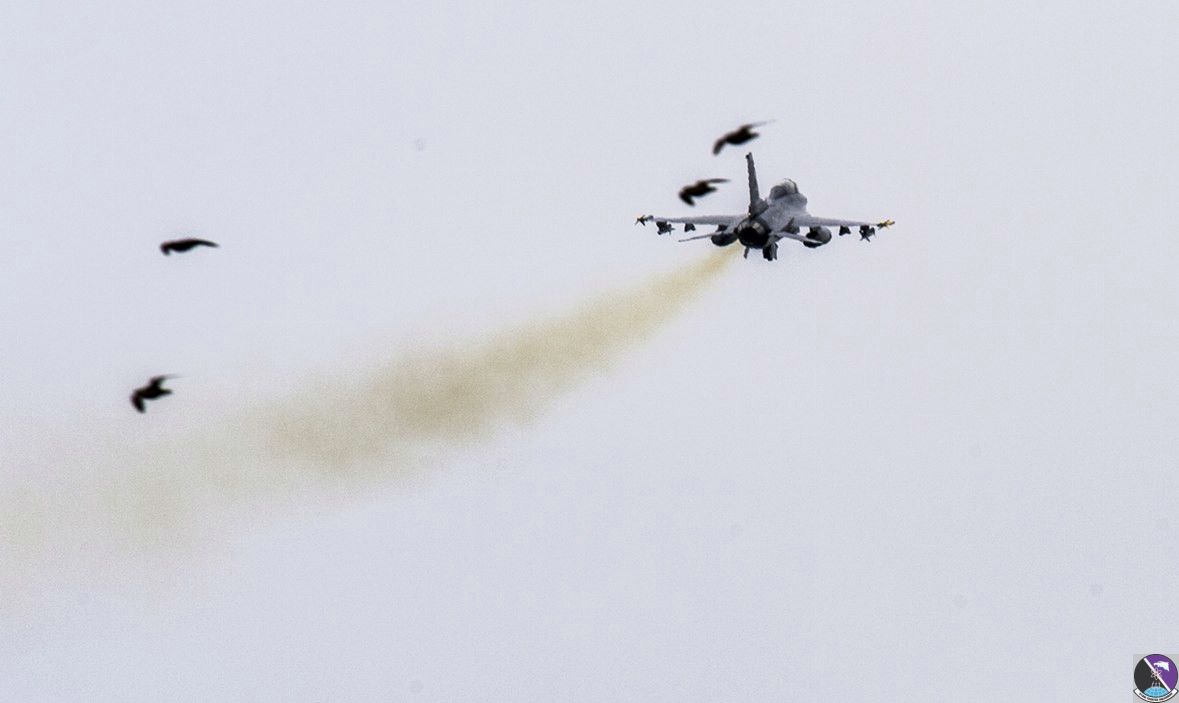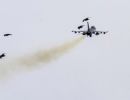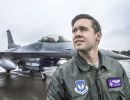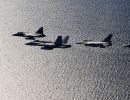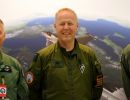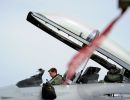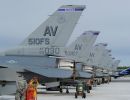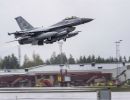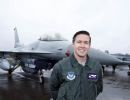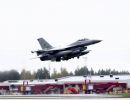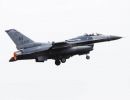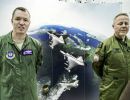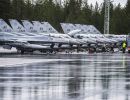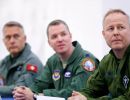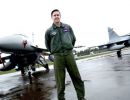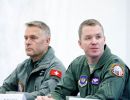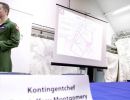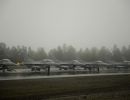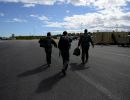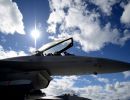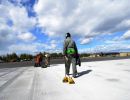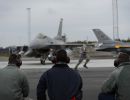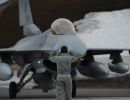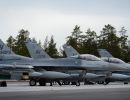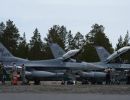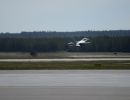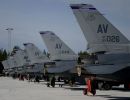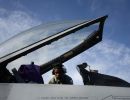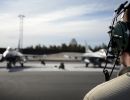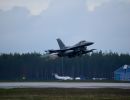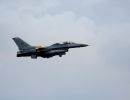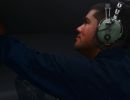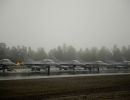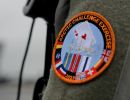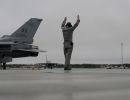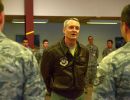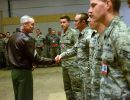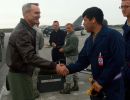-
583291b9 a9df 4503 9a76 dacd85cf51bb
-
67656141 8fb0 4822 ab73 ade0948855c2
-
ace13 nordsamb jas f 16 f 18
-
ace15 dsc 7700 schweiz dep exdir us
-
ace15 dsc8409 remove
-
ace15 dsc8415 buzzards
-
b9d42630 d0de 4b88 a180 a8fef91778aa
-
det ar forsta gangen ryan clis
-
en till ett f16 plan fran us
-
ett plan av typen f16
-
f9e2355b 0b26 48f3 b530 55a22258bbc2
-
fe2c09c6 d844 4839 8246 faa3ef7c1c0b
-
leder aldo wicki ar chef for
-
nato piloten jag alskar mitt
-
overstelojtnant jeffrey montgo
-
ukraina spokar inte samarbet
-
F-16 Fighting Falcon’s with the 510th Fighter Squadron from Aviano Air Base, Italy are parked on an apron at Kallax Air Base, Sweden, May 27, 2015 during Arctic Challenge Exercise 2015. Nine nations participated in the exercise to help ensure interoperability and strengthen relationships with NATO allies and Partners for Peace. (U.S. Air Force photo by Staff Sgt. Evelyn Chavez/Released)
-
U.S. Air Force fighter pilots with the 510th Fighter Squadron from Aviano Air Base, Italy, prepare for takeoff at Kallax Air Base, Sweden, June 2, 2015, during Arctic Challenge Exercise 2015. Nine nations will participate in the exercise to help ensure interoperability, strengthen relationships and engagements with NATO allies and Partners for Peace. (U.S. Air Force photo by Staff Sgt. Evelyn Chavez)
Arctic Challenge Exercise 2015
-
An F-16 Fighting Falcon with the 510th Fighter Squadron from Aviano Air Base, Italy, prepares for takeoff at Kallax Air Base, Sweden, June 2, 2015, for Arctic Challenge Exercise 2015. Nine nations will participate during the exercise to help ensure interoperability, strengthen relationships and engagements with NATO allies and Partners for Peace. (U.S. Air Force photo by Staff Sgt. Evelyn Chavez)
Arctic Challenge Exercise 2015
-
U.S. Air Force Airman 1st Class Keitha Whitaker Jr., 31st Aircraft Maintenance Squadron crew chief, removes chocks from an apron at Kallax Air Base, Sweden, June 2, 2015, during Arctic Challenge Exercise 2015. Nine nations will participate in the exercise to help ensure interoperability, strengthen relationships and engagements with NATO allies and Partners for Peace. (U.S. Air Force photo by Staff Sgt. Evelyn Chavez)
Arctic Challenge Exercise 2015
-
The 510th Fighter Squadron from Aviano Air Base, Italy, arrived at Kallax Air Base, Sweden, May 22, 2015, for Arctic Challenge Exercise 2015. Nine nations will participate during the exercise to help ensure interoperability, and strengthen relationships and engagements with NATO allies and Partners for Peace. (U.S. Air Force photo by Staff Sgt. Evelyn Chavez)
Buzzards kick off ACE 15
-
A U.S. Air Force Airman with the 510th Fighter Squadron from Aviano Air Base, Italy, guides an F-16 Fighting Falcon at Kallax Air Base, Sweden, May 22, 2015. The 510 FS “Buzzards” will take part in Arctic Challenge Exercise 2015. Nine nations will also participate during the exercise to help ensure interoperability, and strengthen relationships and engagements with NATO allies and Partners for Peace. (U.S. Air Force photo by Staff Sgt. Evelyn Chavez)
Buzzards kick off ACE 15
-
The 510th Fighter Squadron from Aviano Air Base, Italy, arrived at Kallax Air Base, Sweden, May 22, 2015, for Arctic Challenge Exercise 2015. Nine nations will participate during the exercise to help ensure interoperability, and strengthen relationships and engagements with NATO allies and Partners for Peace. (U.S. Air Force photo by Staff Sgt. Evelyn Chavez)
Buzzards kick off ACE 15
-
The 510th Fighter Squadron from Aviano Air Base, Italy, arrived at Kallax Air Base, Sweden, May 22, 2015, for Arctic Challenge Exercise 2015. Nine nations will participate during the exercise to help ensure interoperability, and strengthen relationships and engagements with NATO allies and Partners for Peace. (U.S. Air Force photo by Staff Sgt. Evelyn Chavez)
Buzzards kick off ACE 15
-
An F-16 Fighting Falcon with the 510th Fighter Squadron from Aviano Air Base, Italy, takes off from Kallax Air Base, Sweden, May 25, 2015, during Arctic Challenge Exercise 2015. Nine nations will participate during the exercise to help ensure interoperability, and strengthen relationships and engagements with NATO allies and Partners for Peace. (U.S. Air Force photo by Staff Sgt. Evelyn Chavez)
Buzzards kick off ACE 15
-
U.S. Air Force F-16 Fighting Falcons with the 510th Fighter Squadron from Aviano Air Base, Italy, wait for takeoff from Kallax Air Base, Sweden, May 25, 2015, during Arctic Challenge Exercise 2015. Nine nations will participate during the exercise to help ensure interoperability, and strengthen relationships and engagements with NATO allies and Partners for Peace. (U.S. Air Force photo by Staff Sgt. Evelyn Chavez)
Buzzards kick off ACE 15
-
U.S. Air Force Airman 1st Class Keitha Whitaker Jr., 31st Aircraft Maintenance Squadron crew chief prepares an F-16 Fighting Falcon from Aviano Air Base, Italy, for takeoff at Kallax Air Base, Sweden, May 25, 2015, during Arctic Challenge Exercise 2015. Throughout the duration of the exercise, U.S., NATO and Partners for Peace militaries will work in a joint environment to deliver unified responses for simulated contingencies. ACE 15 is scheduled to continue until June 5, before concluding with its final air operations. (U.S. Air Force photo by Staff Sgt. Evelyn Chavez)
Buzzards kick off ACE 15
-
A U.S. Air Force Airman with the 31st Aircraft Maintenance Squadron watches several F-16 Fighting Falcons from Aviano Air Base, Italy, take off from Kallax Air Base, Sweden, May 25, 2015, during Arctic Challenge Exercise 2015. Throughout the duration of the exercise, U.S., NATO and Partners for Peace militaries will work in a joint environment to deliver unified responses for simulated contingencies. ACE 15 is scheduled to continue until June 5, before concluding with its final air operations. (U.S. Air Force photo by Staff Sgt. Evelyn Chavez)
Buzzards kick off ACE 15
-
An F-16 Fighting Falcon with the 510th Fighter Squadron from Aviano Air Base, Italy takes off at Kallax Air Base, Sweden, May 26, 2015, during Arctic Challenge Exercise 2015. Nine nations will participate during the exercise to help ensure interoperability, strengthen relationships and engagements with NATO allies and Partners for Peace. (U.S. Air Force photo by Staff Sgt. Evelyn Chavez)
Arctic Challenge Exercise 2015
-
A U.S. Air Force F-16 Fighting Falcon with the 510th Fighter Squadron from Aviano Air Base, Italy takes off from Kallax Air Base, Sweden, May 26, 2015, during Arctic Challenge Exercise 2015. Nine nations will participate during the exercise to help ensure interoperability, strengthen relationships and engagements with NATO allies and Partners for Peace. (U.S. Air Force photo by Staff Sgt. Evelyn Chavez)
Arctic Challenge Exercise 2015
-
U.S. Air Force Staff Sgt. Michael John Maxwell, 31st Aircraft Maintenance Squadron crew chief, inspects an F-16 Fighting Falcon with the 510th Fighter Squadron from Aviano Air Base, Italy, before takeoff at Kallax Air Base, Sweden, May 27, 2015, during Arctic Challenge Exercise 2015. Nine nations will participate during the exercise to help ensure interoperability, strengthen relationships and engagements with NATO allies and Partners for Peace. (U.S. Air Force photo by Staff Sgt. Evelyn Chavez)
Arctic Challenge Exercise 2015
-
F-16 Fighting Falcon’s with the 510th Fighter Squadron from Aviano Air Base, Italy, are parked on an apron at Kallax Air Base, Sweden, May 27, 2015 during Arctic Challenge Exercise 2015. Nine nations will participate during the exercise to help ensure interoperability, strengthen relationships and engagements with NATO allies and Partners for Peace. (U.S. Air Force photo by Staff Sgt. Evelyn Chavez)
Arctic Challenge Exercise 2015
-
U.S. Air Force Staff Sgt. Eric Gordon, 31st Aircraft Maintenance Squadron crew chief, taxis an F-16 Fighting Falcon with the 510th Fighter Squadron from Aviano Air Base, Italy, at Kallax Air Base, Sweden, May 29, 2015 during Arctic Challenge Exercise 2015. Nine nations will participate during the exercise to help ensure interoperability, strengthen relationships and engagements with NATO allies and Partners for Peace. (U.S. Air Force photo by Staff Sgt. Evelyn Chavez)
Arctic Challenge Exercise 2015
-
A U.S. Air Force Airman waits for an F-16 Fighting Falcon with the 510th Fighter Squadron from Aviano Air Base, Italy, after landing at Kallax Air Base, Sweden, June 1, 2015, during Arctic Challenge Exercise 2015. Nine nations will participate during the exercise to help ensure interoperability, strengthen relationships and engagements with NATO allies and Partners for Peace. (U.S. Air Force photo by Staff Sgt. Evelyn Chavez)
Arctic Challenge Exercise 2015
-
U.S. Air Force Airman 1st Class Bryce Quick, 31st Aircraft Maintenance Squadron crew chief, taxis an F-16 Fighting Falcon with the 510th Fighter Squadron from Aviano Air Base, Italy, at Kallax Air Base, Sweden, June 1, 2015, during Arctic Challenge Exercise 2015. Nine nations will participate in the exercise to help ensure interoperability, strengthen relationships and engagements with NATO allies and Partners for Peace. (U.S. Air Force photo by Staff Sgt. Evelyn Chavez)
Arctic Challenge Exercise 2015
-
Lt. Gen. Darryl Roberson, 3rd Air Force and 17th Expeditionary Air Force commander, speaks with 31st Fighter Wing Airmen at Kallax Air Base, Sweden, June 1, 2015. Roberson thanked Airmen for their hard work during Arctic Challenge Exercise 2015. During his visit, Roberson was briefed on the exercise, visited Airmen and observed mission takeoffs. (U.S. Air Force photo by Staff Sgt. Evelyn Chavez)
Arctic Challenge Exercise 2015
-
Lt. Gen. Darryl Roberson, 3rd Air Force and 17th Expeditionary Air Force commander, shakes hands with several Airmen from the 31st Fighter Wing at Kallax Air Base, Sweden, June 1, 2015. Roberson thanked Airmen for their hard work during Arctic Challenge Exercise 2015. During his visit, Roberson was briefed on the exercise, visited Airmen and observed mission takeoffs. (U.S. Air Force photo by Staff Sgt. Evelyn Chavez)
Arctic Challenge Exercise 2015
-
Lt. Gen. Darryl Roberson, 3rd Air Force and 17th Expeditionary Air Force commander, shakes hands with Staff Sgt. Travis Edelman, 31st Aircraft Maintenance Squadron crew chief, at Kallax Air Base, Sweden June 1, 2015. Roberson thanked Airmen for their hard work during Arctic Challenge Exercise 2015. During his visit, Roberson was briefed on the exercise, visited Airmen and observed mission takeoffs. (U.S. Air Force photo by Staff Sgt. Evelyn Chavez)
Arctic Challenge Exercise 2015
-
Lt. Gen. Darryl Roberson, 3rd Air Force and 17th Expeditionary Air Force commander, walks with 510th Fighter Squadron leadership and his staff during a visit at Kallax Air Base, Sweden, June 1, 2015. Roberson thanked Airmen for their hard work during Arctic Challenge Exercise 2015. During his visit, Roberson was briefed on the exercise, visited Airmen and observed mission takeoffs. (U.S. Air Force photo by Staff Sgt. Evelyn Chavez)
Arctic Challenge Exercise 2015
